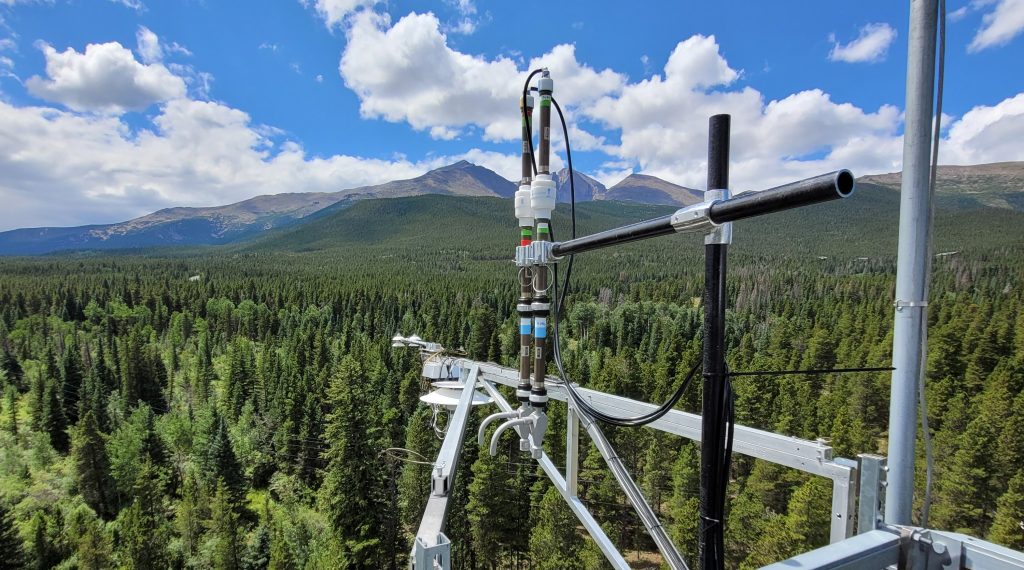
Title : Ammonia Bidirectional Flux Study and Rocky Mountain National Park Initiative
Sponsor: Environmental Protection Agency and National Park Service
Period: 2021 - 2022
In 2004, the Rocky Mountain National Park (RMNP) Air Quality Initiative was formed to study and recommend action on air quality issues facing the park, such as visibility, ozone levels and nitrogen deposition. The Initiative is a collaborative effort of three Memorandum of Understanding (MOU) agencies: the National Park Service (NPS), the U.S. EPA Region 8 (EPA), and the Colorado Department of Public Health and Environment (CDPHE). The MOU agencies developed a Nitrogen Deposition Reduction Plan in 2007 with interim 5-year goal reduction “milestones” on a desired “glide path” with the goal of 1.5 kg/ha/yr by 2032. While progress has been made, the first and second interim milestone (2012 and 2017) goals have not been achieved.
Ammonia (NH3) dry deposition is an important component of the total N deposition budget, particularly within and downwind of agricultural areas where atmospheric NH3 concentrations can be high. Measurements of bidirectional or “net” exchange between the ecosystem and atmosphere allow for the determination of the amount of NH3 that is dry deposited and incorporated into an ecosystem. Additional measurements and in-situ modeling are needed to characterize the importance of NH3 dry deposition to total N deposition to Park ecosystems and the role of NH3 dry deposition as a removal process during transport of air masses from the Front Range agricultural source region to the Park. The extent of upwind dry deposition of NH3 also affects the amount of NH3 available to be scavenged and wet deposited within the park. Measurements and modeling of NH3 bidirectional exchange at two sites, representing predominant ecosystems, between the source region and RMNP will allow us to begin to characterize the spatial gradients in NH3 dry deposition over this region. Research in this vein will enable a better understanding of the downwind impacts of NH3 emissions from the source region and thus the potential benefit of emission reductions. New insight into these questions will have significant policy implications for the RMNP nitrogen deposition reduction plan 2022 milestone.
Research tasks consist of both measurements and modeling. Various measurements will be collected at two locations for different durations over a period of 12 months targeting the common natural landscapes/ecosystems along the NH3 concentration gradient from the source region to RMNP and, where possible, will build on previous NH3 monitoring and ecosystem studies. Ecosystems will include a grassland site between an important agricultural source region (near Greeley, CO) and RMNP and an evergreen forest site in RMNP. Air-surface exchange of NH3 and other reactive nitrogen species (i.e., nitric acid, ammonium aerosol, and nitrate aerosol) will be measured directly during the spring or summer season at both locations using flux gradient methodology. Air concentrations of gases and particles will be measured using annular denuder/filter pack systems. Flux measurements will be conducted for a period of two weeks at RMNP and one week at the grassland site.
